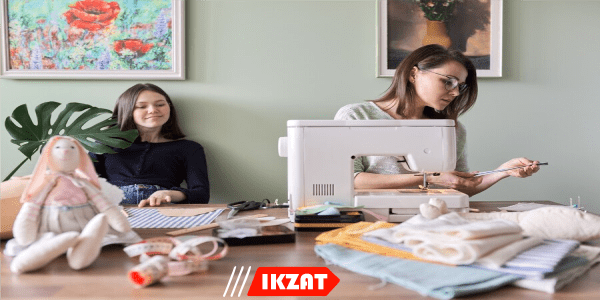In today’s world, sustainability and personalization have become the cornerstones of modern fashion. As we step into 2024, the trend of DIY fashion continues to gain momentum, allowing individuals to express their unique style while promoting eco-friendliness through upcycling. This comprehensive guide delves into innovative upcycling techniques and personalization tips that will not only refresh your wardrobe but also align with the latest fashion trends.
Why Upcycling is the Future of Fashion
Upcycling involves repurposing old or discarded materials into new, high-quality items. This practice is not only environmentally friendly but also offers a creative outlet for fashion enthusiasts. Here are some compelling reasons why upcycling is set to dominate the fashion industry in 2024:
- Environmental Impact: Upcycling reduces waste, lessens the demand for new resources, and minimizes the carbon footprint associated with manufacturing new clothes.
- Economic Benefits: By upcycling, individuals can save money by transforming existing items into fashionable pieces, rather than purchasing new ones.
- Unique Style: Upcycled fashion pieces are often one-of-a-kind, reflecting personal creativity and style.
Essential Tools and Materials for DIY Upcycling
To embark on your upcycling journey, gather the following tools and materials:
- Sewing Machine: A reliable sewing machine is crucial for making precise alterations and durable finishes.
- Fabric Scissors: High-quality fabric scissors ensure clean cuts and ease of handling different materials.
- Thread and Needles: Various thread colors and needle sizes will help in diverse sewing tasks.
- Fabric Glue: For non-sew projects, fabric glue provides a quick and strong bond.
- Paints and Dyes: Fabric paints and dyes allow you to add color and patterns to your creations.
- Embellishments: Buttons, beads, patches, and ribbons can add unique touches to your upcycled items.
Upcycling Techniques for a Modern Wardrobe
Transforming Old T-Shirts into Trendy Tops
One of the simplest yet most effective upcycling projects involves converting old T-shirts into fashionable tops. Here’s how:
- Crop and Hem: Cut the T-shirt to your desired length and hem the edges for a clean finish.
- Add Fringe: For a boho look, create fringe by making small, evenly spaced cuts along the bottom edge.
- Apply Tie-Dye: Use tie-dye techniques to add vibrant colors and patterns to plain T-shirts.
Repurposing Jeans into Stylish Shorts
Old jeans can easily be transformed into trendy shorts. Follow these steps:
- Measure and Cut: Mark the desired length and cut the jeans. Leave extra length for hemming or fraying.
- Distress: Use sandpaper or a cheese grater to create distressed areas for a worn-in look.
- Embellish: Sew on patches, beads, or lace to personalize your shorts.
Turning Dresses into Chic Skirts
Outdated dresses can find new life as chic skirts. Here’s a simple method:
- Cut the Dress: Remove the top part of the dress, leaving the skirt portion intact.
- Add a Waistband: Attach a new waistband using elastic or fabric for a secure fit.
- Decorate: Enhance the skirt with embroidery, fabric paint, or sequins.
Personalization Tips for Unique Fashion Statements
Custom Embroidery
Embroidery adds a personal touch to any garment. Whether it’s a favorite quote, a floral design, or abstract patterns, embroidery can make your clothing uniquely yours. Beginners can start with simple designs and gradually move to more complex patterns.
Fabric Painting and Dyeing
Fabric paints and dyes offer endless possibilities for customization. Try these ideas:
- Stencils: Use stencils to create precise designs with fabric paint.
- Ombre Dyeing: Create a gradient effect by gradually immersing fabric in dye.
- Freehand Painting: Express your artistic side with freehand designs directly on the fabric.
Adding Patches and Appliqués
Patches and appliqués can transform plain garments into eye-catching pieces. Choose from a variety of styles, including:
- Iron-On Patches: Easy to apply and available in numerous designs.
- Sew-On Patches: More durable and versatile for different fabrics.
- DIY Appliqués: Create your own designs using fabric scraps.
Sustainable Fashion Practices for 2024
Incorporating sustainability into your fashion routine goes beyond upcycling. Here are some practices to consider:
- Thrift Shopping: Purchase second-hand clothing to reduce demand for new production and support circular fashion.
- Clothing Swaps: Organize or participate in clothing swaps to refresh your wardrobe without buying new items.
- Eco-Friendly Fabrics: Choose clothing made from sustainable materials like organic cotton, bamboo, or recycled polyester.
Innovative Upcycling Project Ideas
Patchwork Quilts from Fabric Scraps
Utilize leftover fabric scraps to create beautiful patchwork quilts. This project not only uses up small pieces of fabric but also results in a cozy, unique blanket.
Upcycled Accessories
Transform everyday items into fashionable accessories:
- Jewelry: Create earrings, necklaces, and bracelets from recycled materials such as old buttons, beads, and metal parts.
- Bags: Convert old clothing or fabric remnants into stylish bags and totes.
Home Décor from Upcycled Materials
Extend your upcycling efforts to home décor:
- Pillows: Use fabric scraps to make decorative throw pillows.
- Rugs: Weave strips of old clothing into colorful, textured rugs.
Conclusion
Embracing DIY fashion through upcycling and personalization not only contributes to a sustainable future but also allows you to craft unique pieces that reflect your personal style. As we navigate 2024, these practices are more relevant than ever, encouraging creativity, sustainability, and individuality in the fashion world.













